August/September 2002
Ciad Mile Failte
A hundred thousand welcomes
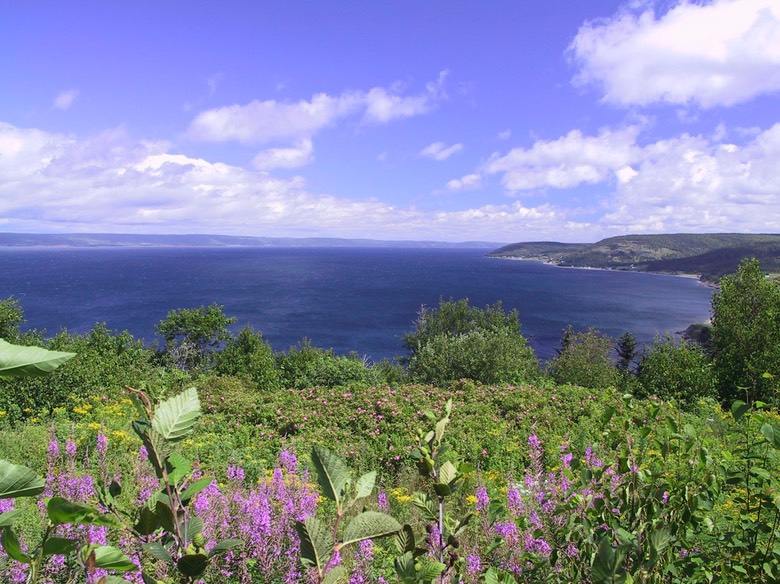
We’ve spent the last five weeks or so in Canada, mostly in beautiful, fantastic Nova Scotia. Repeatedly we were greeted with Ciad Mile Failte, Gaelic for “A hundred thousand welcomes” and symbolic of the smiling, open-hearted welcome we received everywhere we went. The countryside is lovely, but it’s the charming mixture of cultures that has us caught in Nova Scotia’s web.
Much of our time has been spent on Cape Breton Island, where this joining of peoples is so very prevalent. Things English are plentiful, but it’s the French, the Irish, and the Scottish influences that charm you. The names of the towns tell the story: Inverness, Judique, Presque-Isle, Cavendish, Bay St. Lawrence, Creignish, Main-A-Dieu, Sydney, Ingonish, to name a few. Many times, the same village name is used over and over, as if to describe a very large area. The lovely Margaree Valley is represented by South West Margaree, Margaree Fork, Margaree Centre, North East Margaree, Margaree Harbor, East Margaree, Upper Margaree, the town of Margaree Valley, and, oh yes, lovely Margaree itself. You see!
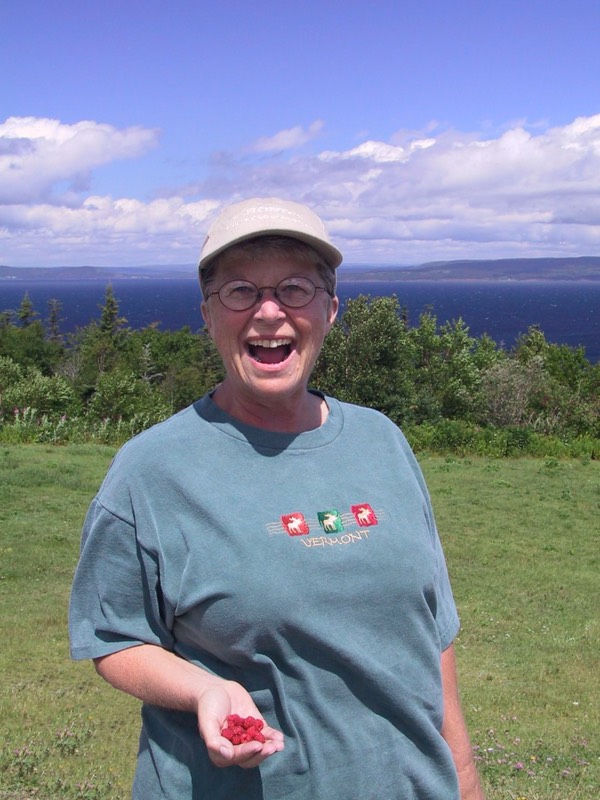
August was a grand time to be up here. The wild raspberries, blueberries and blackberries were coming on, providing an accompaniment to many dishes of fresh fruit. The weather was lovely, in the high 80’s (that’s 32 degrees Celsius to the locals), which is warm inland but splendid with the cool ocean breezes. The views were spectacular along the Cabot Trail. The Cabot Trail is highly touted as one of the loveliest drives anywhere, a reputation it greatly deserves. The Trail circumnavigates most of the north end of the island, and presents rocky coasts and picturesque harbors aplenty. For motorcyclists, it’s one of “the” rides in North America. But it’s also narrow and windy and scary. The recommendation is to “do the Trail” clockwise, because you get to hug the hillside instead of having your rump hanging out over the edge looking down – a long ways down. But then you only get to see half the special views; so we went back and forth both ways several times, not missing anything, and taking pictures wherever we could. And what pictures we took!
Did I mention the roads? Do you remember the song “You take the high road and I’ll take the low…..”???? Well, up here, you take both at the same time. You gotcher high spots, yer low spots, yer perpendicular dips in the road, not to mention yer lengthwise dips; it’s all right there, all at once. For a national treasure of a road, the Cabot Trail is as much of a trial as a trail in places. The sections within Cape Breton Highlands National Park are generally pretty good, but the road leaves the park and returns in a few places and outside the park things deteriorate. And here’s a curiosity for you: you remember John Cabot; he’s the explorer the trail is named for. Well, he wasn’t John and he wasn’t Cabot; he was Giovanni Caboto, and he was Italian. 1497 was the big date.
We’ve noticed the generally poor roads throughout Canada, but it has also been true over many parts of the United States. We continue to feel that New York has the best roads we’ve seen anywhere. Go you New Yorkers! Elsewhere the roads are very spotty. And you already know California has plenty of lousy roads. So no local bragging rights out West!
The campgrounds are filled with Canadians, naturally, many of them from Quebec. We heard as much French as English spoken around us; a tiny little cherub just marched by singing “Frère Jacques”; a treat to be remembered. Everyone in a campground is an instant friend, regardless of the language spoken, because of the shared experiences. They stop by to admire our motorcycle, or the coach, and we are enjoying the many versions of tent trailers and tents and small motorhomes. Often, we are the biggest beast around, which has surprised us. We do continue to see large motor coaches, of course, but they are more likely to be American than Canadian. We’re very glad we aren’t any larger than we are; these little villages are just that. The big coaches must be parking on the edge somewhere and walking in, that’s all I can figure. They can be as overwhelming as tour busses.
The Gaelic presence on Cape Breton is personified by the St. Anns Gaelic College of Celtic Arts and Crafts, the only Gaelic college in North America. Stopping by is a treat all by itself, but concerts and events are held there regularly. We spent time in the Hall of the Clans, which illustrates Scottish history, both in Scotland and locally. The various clans are represented by their histories and their tartans, and the gift shop is full of splendid woolens and cloth to purchase, along with many other irresistible items (any one for a Gaelic dictionary?) It was a fascinating stop. We attended two events, the first a Mhoid, a Gaelic Mod, which included workshops on speaking Gaelic (which we skipped), a codfish supper (give a guess – Rick eating codfish? Hah!), a milling frolic (you have to come and find out for yourself what that is), and a ceilidh to top it off. A ceilidh is a concert, and this was great fun. It was put on by students at the college, joined by many locals, including a bagpiper and a couple of brothers in their 70’s. Lots of singing and fiddling; very low key and informal, which suited the occasion. We then went back a week later for a Fiddlers Festival. Interestingly, it had all these same other kinds of folks too, in addition to the fiddlers. Again, more low key than we are used to. We had a good time at both events. At the fiddling event it was Mary Margaret MacGillvray’s 101st birthday; the crowd stood and sung to her. We were charmed.
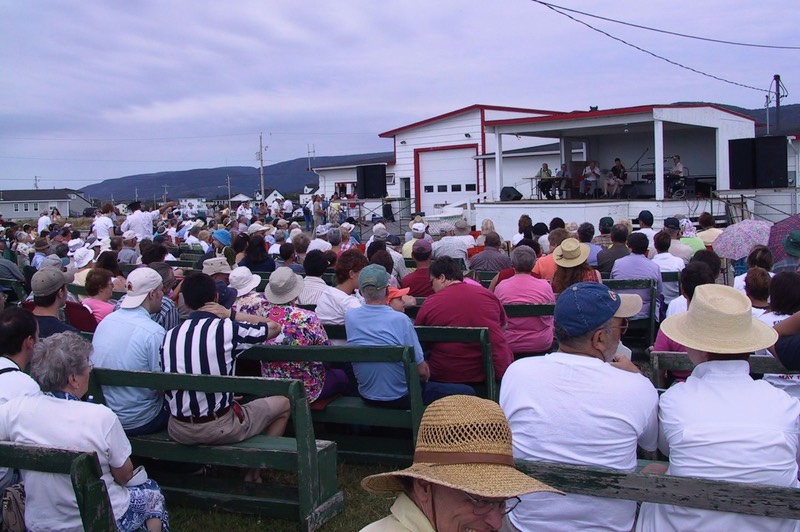
We also attended a Scottish Concert, a fundraiser for the St. Joseph du Moine volunteer fire department. It was a real hoot! All these events are carried on in a very solemn way; the performers are very serious, come on and do their thing, then march right off, not waiting for the applause or taking a bow. Rick liked the Scottish Concert best of these three events. It combined the greatest variety of performers, and seemed the most professional, at least in places. But again extremely homespun. The announcers were from “away,” (maybe 50 miles); they commented on the fact that they had new chairs to sit on this year, and were very thankful.
We were getting just a bit curious as to when they’d get under way when the concert, announced for two o’clock, hadn’t begun at ten after; then the charming French-speaking chief of the fire department got up to welcome those in attendance and explain the delay: it seems that the posters all said two, but the invitations sent to the musicians gave three as the starting time. We howled! There were spoon players, fiddlers, step dancers galore, singers (including two elderly brothers – the same ones who performed at both of the concerts at the Gaelic college – one of whom had come all the way from Iona (maybe 20 miles) to perform for us. Many, many locals in attendance, including old ladies in their Sunday finest.
It got hot in the afternoon (the beer garden was doing a lively business) and the old ladies were getting out their umbrellas (at least one brolly looked pretty much the worse for wear—broken spokes galore); one didn’t have an umbrella, so she put a paper towel over her head and fastened it down with her glasses. The faces on the old people were wonderful; these are fishing and farming communities, and these people show the years of sunshine and weather. We even heard some bluegrass music – with a Canadian accent! One of my favorites was a kid who was a fiddler; he was accompanying a women step dancing, but he had so much energy he got up and step danced too, while he was fiddling – in sandals no less. There was a middle-aged woman directing the “talent” and we nicknamed her “The Matron.” She really kept them all moving right along and had a face and hairstyle right out of the ‘50s. The quantity, if not always the quality, of the performers was astounding. There must have been fifty different performers there and they kept showing up on stage in different groupings and often on different instruments. Each group would only do one or two pieces, but they’d be back up with somebody else after awhile. We loved every minute of the five hour plus outing – by the way, the Fiddle Festival went for six hours, all without any break or intermission.
A treat for both of us was to sit and watch the local people out enjoying themselves, and to see our own ancestors reflected in their faces. We both have plenty of Scottish-Irish-English blood in us and “saw” family members around every corner.
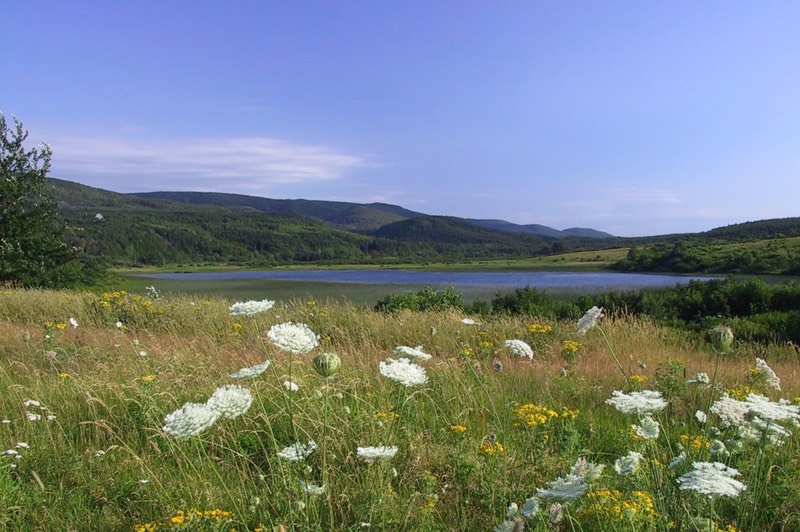
What is quite apparent in these concerts is that they aren’t really “performances” such as we’re used to. The participants range from the quite elderly to the very young. Cape Breton Island is full of ancient traditions, and there is a strong desire to make sure these traditions are passed on to each succeeding generation. So when someone is on stage, they aren’t performing, they’re sharing what they know. These songs and dances and tunes are played at home all the time to make sure they are passed along. So when someone finishes, they aren’t so concerned that they’ve “performed well” – it’s more as if they hope you enjoyed what they had to offer. The step dancers have something they do which is great fun; they dance while accompanied by a fiddle and maybe a piano. But they make all the decisions. It seems they dance until they cannot dance any longer; then they simply stop, turn around, and leave the stage. The others are left trying to make the music stop in a way that might make some sense!
In addition to the folk concerts we attended, by a fluke we also had the opportunity to see a group called The Men of the Deeps. We were in Glace Bay, an old mining community. The mining is gone from the island now, but this group of men are all former miners, and formed a men’s chorus many years ago (1966). They are very good. They have traveled the world around, and if you ever see them coming to your neighborhood, get your tickets right away. They perform weekly during the summer at the Miner’s Museum in Glace Bay, a lovely spot located right on the bluffs overlooking the ocean. We had stayed overnight in the parking lot our first night in Cape Breton, and came back to enjoy the spot again. We’d only intended to stay the one night, but learned of the concert the next night while talking to a delightful local gent out walking his dog. We stayed over and were very pleased we did. In keeping with what we’d seen at the other events, the singing of the miners wasn’t really “professional”, although it was excellent, but was so heartfelt and sincere that it was extremely effective. The men were telling stories of not only their own lives, but those of their fathers and grandfathers as well. It was a moving experience.
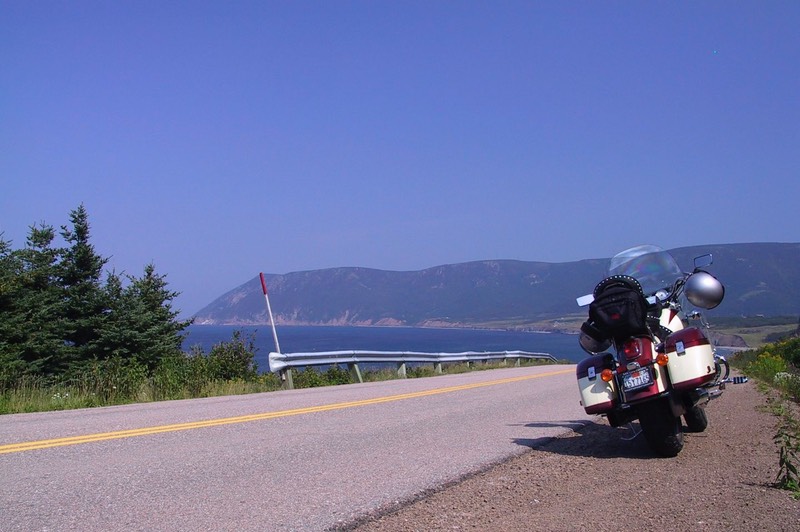
The food has been great, and surprisingly inexpensive. We stopped at a “Celtic Tea Room” for lunch one day. It was in one of the small churches that are everywhere on the island. I had a lobster sandwich (it was good, but not really special: chunks of lobster with some mayonnaise on the bread); Rick saw they were still serving breakfast, and had the local version of French toast, which he pronounced quite good. We also had the best fish and chips either of us has had in quite awhile, at another stop. The fish is very fresh, of course, and yummy.
We have enjoyed several national parks in Canada, as well as many, many historic sites. Canada does a good job with its historical “opportunities.” One very interesting spot was Baddeck (pronounced Ba-DECK), where Alexander Graham Bell spent many years post-telephone invention. The phone is all we ever remember him for, but he was a prolific inventor, and also instrumental in developing ways to teach the deaf. The museum was a beautiful building with extremely interesting exhibits. And Baddeck is gorgeous, right on the water (as are so many of the lovely villages on the island). And by the way, if you are looking for a B&B recommendation on Cape Breton Island, I’d start with Castle Rock Country Inn in Ingonish. It’s perched on the edge of a cliff with a splendid view; no idea if the accommodations are any good, but who cares?
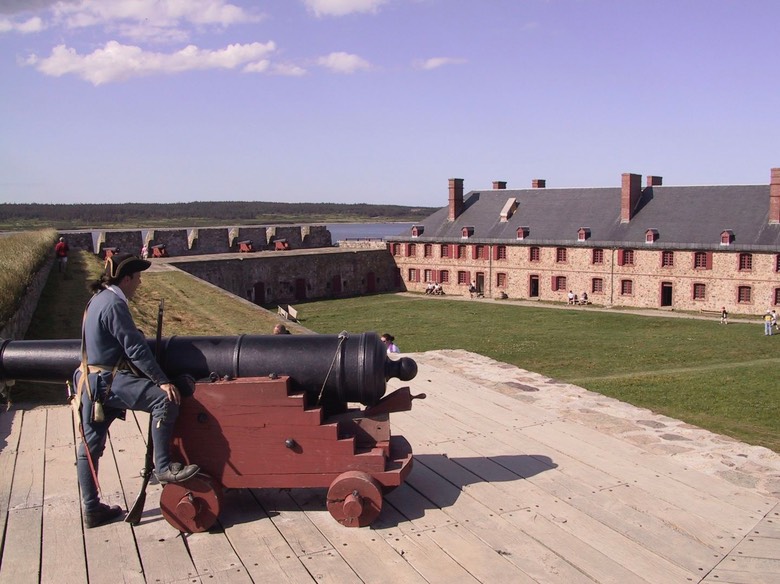
Probably the most well known and spectacular historic site in Nova Scotia is the Louisbourg Fortress. It is the largest national historic site in Canada, and ties in nicely with the miners. All the mines shut down in the late 50s and early 60s, creating a lot of unemployment. Motivated in part by the need for employment opportunities in Cape Breton, the national government decided to undertake the rebuilding of this fortress that dated back to 1713. Originally built by the French, it was occupied by them until it was destroyed by the British in 1758. Well, the story of Louisbourg and its rebuilding over a 20-year span, and the quality of the restoration work, is really fascinating. We spent all day there and could have gone back for more if we hadn’t already walked ourselves silly. Add in the fact that it is located at the edge of a lovely natural harbor with the small village of modern Louisbourg across the way and a lovely lighthouse on the point -- and the gorgeous sunset and the full moon rising out of the water -- needless to say, another highpoint in our stay. Both of us have simply fallen in love with Cape Breton. It’s that simple. I wish we had been able to write down the Gaelic phrase shared by a performer at the fiddle festival meaning “we are planning to return soon”, because we certainly are. We’re already plotting routes to allow us to see much more of the Maritime Provinces next summer and fall. It is truly a special place.
As you may know, there’s much more to Nova Scotia than just Cape Breton Island. The two parts of this province are connected by the Canso Causeway, and there’s plenty of countryside “below.” Halifax is the capital, and it’s an interesting place. It’s defined by a very large, very deep, very important harbor. Halifax goes way back in history, mostly through its connection to the sea. We enjoyed several days in the area, first checking out an excellent maritime museum (for non-boating people, we really are very interested in maritime stuff: we must have had fish for ancestors); and then wandering around this really cool citadel that was built early in the 19th century and which came complete with bagpipers and marching soldiers in appropriate uniforms. Great fun. One of the nicest things about being there was that we had made contact with and were traveling with good friends from California. It was good to see them. They are boating people, and gave us new perspectives on what we were seeing.
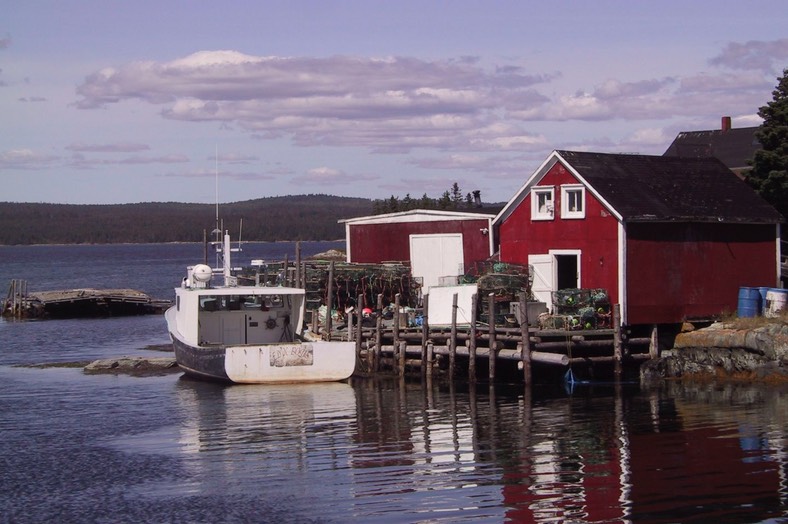
A treat for all four of us was a visit to Lunenburg, a very, very old town on the coast; a fishing area, it was filled with old buildings painted beautiful colors. One that continues to stand out for me is the special red I’ve seen all over Nova Scotia. It is very dark, yet quite bright; many buildings and boats and barns are painted this lovely color. And we went for a boat ride, very tame but cool nonetheless. The Bluenose II is a replica sailing vessel; it belongs to the Province of Nova Scotia and is a sort of good-will ambassador. We enjoyed a two-hour voyage out of the port of Shelbourne, a nice little village. For those of you who are familiar with Patrick O’Brien’s Jack Aubrey novels, you’ll understand how much we enjoyed being aboard, having read all 20 of them at least twice.
When we think of Nova Scotia, harbors and forests and little white churches come to mind, with water everywhere. They grow corn, apples, and hay, and have lots of dairy farms. Add in the delightful and friendly inhabitants, and what more could you want?
Even though the majority of our time in the Maritime Provinces was spent in Nova Scotia, we also enjoyed New Brunswick very much. We had a delightful night camping at tiny Dipper Harbor and eating the best salmon I’ve ever had, at the Fundy Haven Restaurant. As you cross into Canada from Maine, St. John is the first major town, and we spent several days camping in the park there, a lovely spot. The New Brunswick Museum is there, and it has a fascinating exhibit on ship construction during the “old days” that was well worth the price of admission.
The Bay of Fundy is a very interesting and popular tourist attraction. This bay has a natural phenomenon of very high tides (the highest in the world). Boats are left hanging at low tide; then at its highest huge areas are underwater. We were fascinated by the huge mud flats that are everywhere at low tide; we watched them disappear rapidly as the tide came in. The whole Bay of Fundy area is affected by these tides. Also available to be enjoyed are many charming small towns, each with at least one very picturesque church. They are Anglican and United Church of Canada mostly, with others mixed in. Each and every one was worthy of a picture or two.
To go between New Brunswick and Nova Scotia you have to cross the Bay of Fundy at Moncton; it has two bridges. One is very, very, very narrow and is marked as a no-no for RVs; unfortunately these signs are very small and we didn’t see them until it was too late. We took a wrong turn and ended up having to cross this puppy; very slowly, stopping traffic, people cursing; all the things you’d expect. Rick is a master at this by now, and we only dinged the right hand mirror twice (and that only because a couple of the bridge struts were bent). Never again!
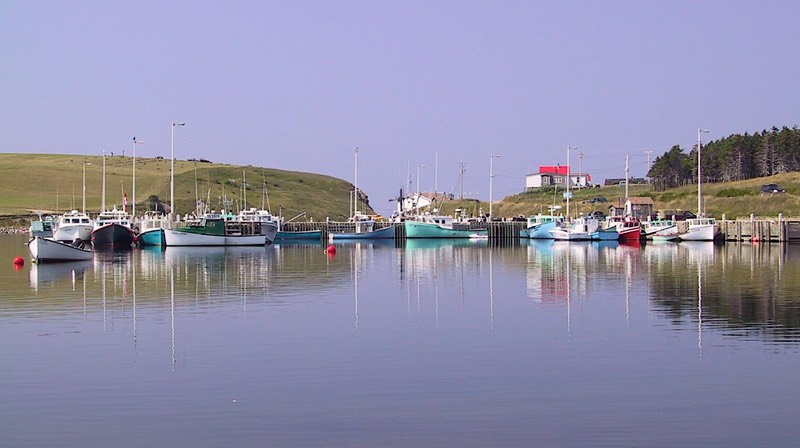
Every sign in New Brunswick is in both English and French. This disappears when you get to Nova Scotia. It seems as though once you get more than one province away from Quebec, the French influence lessens. All the national signs were in both languages, of course, but not ordinary road signs or names on buildings.
After a grand and lovely visit, we crossed back into the United States at the little town of St-Leonard. It is quite far north in New Brunswick, nearly to Quebec actually, and the entire area, both in Canada and the US, shows strong French influences. Most of the people were bilingual, and the towns and buildings reflected that heritage. In many ways we were very frumpy about leaving the Maritime Provinces. However, there are some things we have missed, such as lifesavers, enchilada sauce, and decent crackers. Also, our phone now can be used without costing a fortune, and our mail takes less than two weeks to find us.
A comparison of costs? Right now, in 2002, fuel is more expensive in Canada, but food is cheaper, both in the stores and eating out. Campgrounds are considerably less expensive, although they often have no hookups. All told, is it a “good deal” traveling in Canada? You bet! We’ll be back next year, as we’ve said, and will stay much longer. We want to go to Newfoundland and Prince Edward Island, and we’ve only seen about half of Nova Scotia and New Brunswick, to say nothing of Quebec.
For now, we feel a little like we’ve just returned from the far side of the moon, and we’re happy enough being back. On to the Fall Color in New England!
Kathy & Rick
See more photos from the US & Canada in 2001 to 2003